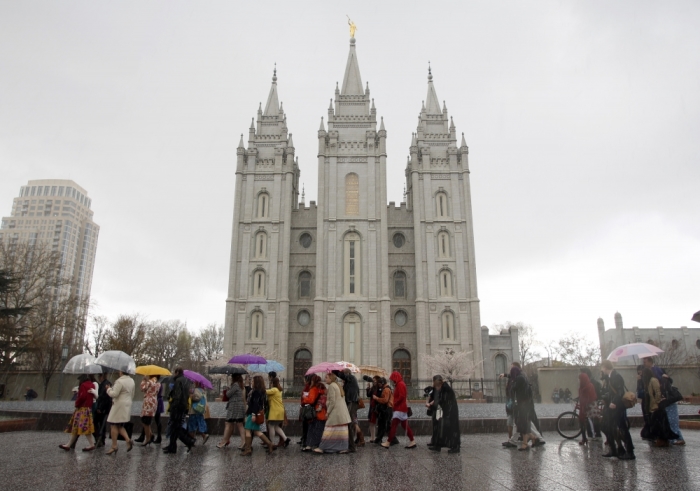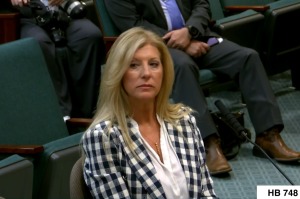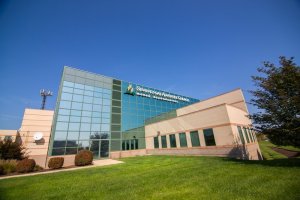LDS church says it spends majority of tithes, donations ‘immediately,' after IRS complaint on $100b stockpile

A day after a report on a new whistleblower complaint to the Internal Revenue Service alleged the Church of Jesus Christ of Latter-day Saints had stockpiled some $100 billion of tithes and donations meant for charity, officials at the organization pushed back saying the “vast majority” of those funds are spent immediately for church business and related humanitarian work.
“We take seriously the responsibility to care for the tithes and donations received from members. The vast majority of these funds are used immediately to meet the needs of the growing Church including more meetinghouses, temples, education, humanitarian work and missionary efforts throughout the world,” LDS officials said in a statement Tuesday.
It noted however that the church has managed to save and invest its finances well to build a “prudent reserve for the future.”
“Over many years, a portion is methodically safeguarded through wise financial management and the building of a prudent reserve for the future. This is a sound doctrinal and financial principle taught by the Savior in the Parable of the Talents and lived by the Church and its members. All Church funds exist for no other reason than to support the Church’s divinely appointed mission,” they continued. “Claims being currently circulated are based on a narrow perspective and limited information. The Church complies with all applicable law governing our donations, investments, taxes, and reserves. We continue to welcome the opportunity to work with officials to address questions they may have.”
In the confidential complaint filed at the IRS on Nov. 21, David A. Nielsen, a 41-year-old Mormon who worked as a senior portfolio manager at the church’s investment division, a company named Ensign Peak Advisors until September, disputes the narrative from the LDS and alleges that the church amassed some $100 billion dollars in accounts meant for charitable purposes over the last 22 years and gave $0 for religious, educational, or charitable distributions even as some members struggled financially.
Nielsen’s twin brother, Lars P. Nielsen, a healthcare consultant in Minnesota who helped prepare the complaint to the IRS, said his brother was “dejected” by the manner in which the church has been operating. He also released a video and copies of documents on YouTube as evidence backing up claims he made in the report.
“Megachurch scandals involving private jets, offshore islands and imprudent investments are a dime a dozen, but not when it comes to gigachurches—because there is only one of those. And they no longer like being called ‘Mormon,’” Lars Nielsen writes in the complaint.
He noted that even though Ensign Peak Advisors is ostensibly a 501c3 supporting organization to the Corporation of the President of the Church of Jesus Christ of Latter-day Saints, “it is functionally not so.”
“Its owned assets under management have grown from $10 billion to $101 billion in 22 years without making a single religious, educational or charitable distribution. It has garnered tens of billions of dollars in tax breaks from the Internal Revenue Service (IRS) without any activity towards any tax exempt mission,” the executive summary of the complaint says.
“In addition, it has engaged in two unlawful distributions per its Articles of Incorporation (AOI) and the Internal Revenue Code (IRC). Top COP and EPA leaders have made public statements concerning church finances and reserves that are disingenuous, specious, and false for the purpose of misleading the IRS, church members, and the public because they were afraid of losing their tax-exempt status,” It added noting that “the COP fails a common-sense commensurate test, which should disqualify it and all its supporting organizations—especially EPA—from tax-exempt status.”
The church was able to use some $2 billion from Ensign over the past decade to bail out church-run insurance company, Beneficial Life, and a shopping mall in Salt Lake City, which was a joint venture between the church and a major real estate company, according the complaint first made public by The Washington Post.
It also sharply criticizes church leaders for continuing to ask for tithes, even though it could comfortably stop collecting tithes in January 2020 and still be able to cover the church’s cost in perpetuity.
“The COP is famously tight lipped about what its total tithes and donations are, but one EPA senior leader suspected in 2019 that they are $6–$7 billion annually with maybe $5–$6 billion in expenses. If that is true, then every single member of the LDS Church could stop paying tithing in January 2020 and EPA would still be able to cover all of the COP’s unchanged costs in perpetuity (without shrinking EPA’s OAUM),” it explains.





























